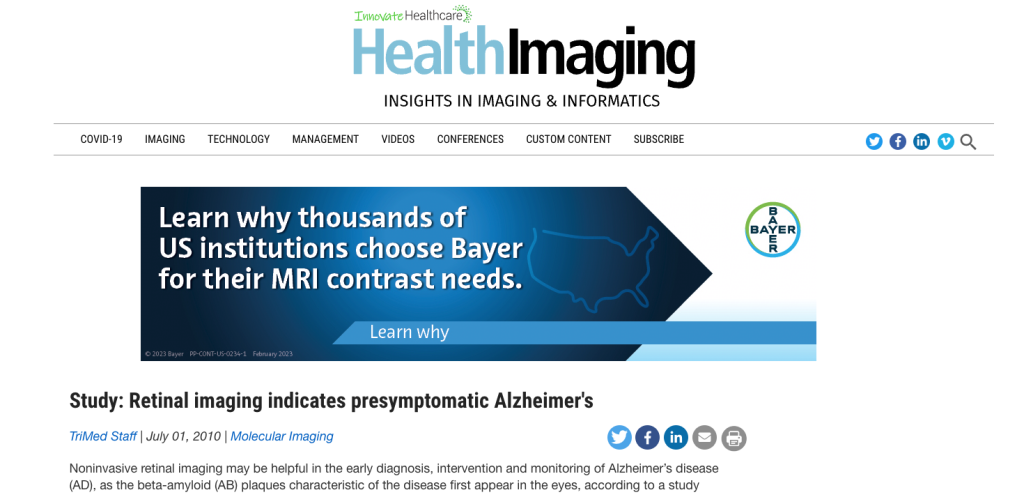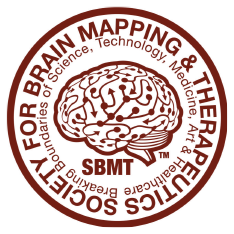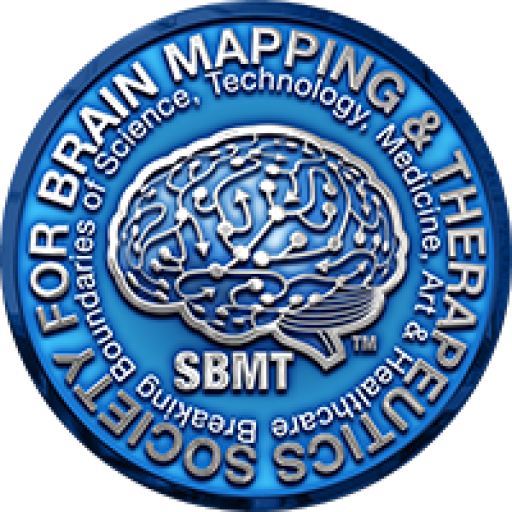
TriMed Staff | July 01, 2010 | Molecular Imaging
Noninvasive retinal imaging may be helpful in the early diagnosis, intervention and monitoring of Alzheimer’s disease (AD), as the beta-amyloid (AB) plaques characteristic of the disease first appear in the eyes, according to a study published online June 13 in NeuroImage.
Since existing noninvasive brain-imaging technologies cannot provide sufficient detail about changes within cells and cell communication and are limited in both specificity and resolution, the most definitive diagnosis of AD currently comes after an autopsy.
“The retina as an extension of the brain portrays an appealing target for a live, noninvasive optical imaging of AD if disease pathology is manifested there,” wrote Maya Koronyo-Hamaoui, PhD, a research scientist and assistant professor of neurosurgery at the Maxine Dunitz Neurosurgical Research Institute at Cedars-Sinai Medical Center in Los Angeles, and her colleagues.
Koronyo-Hamaoui and colleagues first identified retinal AB plaques in the eyes of eight AD patients, with five patients suspected of early stage disease based on brain pathology and clinical reports. The plaques were undetectable in five age-matched non-AD individuals.
Next, the authors utilized a noninvasive optical imaging technique to detect retinal plaques in 18 live laboratory mice genetically modified to model the human disease and compared the results to 10 mice without the plaques. In the 18 genetically modified mice, detection of plaques followed administration of curcumin, a plaque-labeling fluorochrome.
The researchers found that retinal plaques were detectable earlier with their optical imaging approach – while still at a pre-symptomatic stage and before the plaque appeared in the brain and accumulated with disease progression.
“Systemic administration of curcumin allowed noninvasive optical imaging of retinal AB plaques in vivo with high resolution and specificity and plaques were undetectable in mice [who were not genetically modified to model AD],” said the authors.
“Our discovery of AB specific plaques in retinas from AD patients, and the ability to noninvasively detect individual retinal plaques in live AD mice establishes the basis for developing high-resolution optical imaging for early AD diagnosis, prognosis, assessment and response to therapies,” concluded the researchers.
The study, which was conducted at Cedars-Sinai, is slated to be presented at the Alzheimer’s Association International Conference on Alzheimer’s disease on July 13 in Honolulu.




